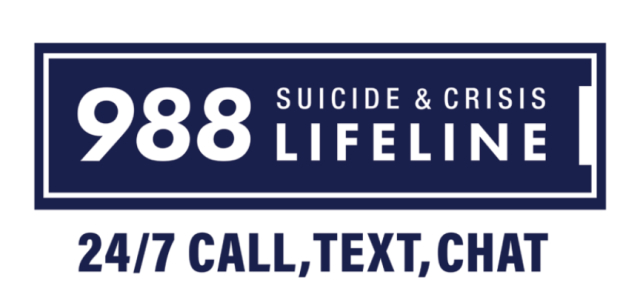With the fall days getting shorter, less natural light, and the holidays approaching, many people may experience a low feeling, often referred to as the ‘Winter Blues’ or ‘Holiday Depression‘.
Are you feeling different these days? Melancholy? Anxious? Stressed out? Or perhaps wanting to hide away and skip this year’s festivities all together? These are common seasonal emotional shifts that can cause disruption in relationships, mental health, and our ability to manage all that the holidays bring – from parties, presents, and family time to the overwhelming lack thereof.
In this article, we will take a closer look at the causes and cures for ‘holiday depression’ and contrast its symptoms to Seasonal Affective Disorder, or SAD—which is a well-defined clinical diagnosis related to the shortening of daylight hours that can last as long as 5 months.

What’s the difference between Winter Blues and SAD?
As the seasons change, so can our mental health. For some, the shorter days and colder weather can trigger Seasonal Affective Disorder (SAD) or Holiday Blues.
- SAD is a type of depression that comes and goes with the seasons. It typically starts in late fall or early winter and goes away during the sunnier days of spring and summer.
- On the other hand, Holiday Blues are feelings of sadness, loneliness, and anxiety that can occur during the holiday season. These emotions are usually temporary and generally will subside once the festivities are over.
“Understanding the conditions of Seasonal Affective Disorder is the first step towards managing them,” says Dr. Ryan Wood of NW Regen in Portland Oregon, a regenerative medicine clinic that can treat patients experiencing SAD with an effective treatment known as a Stellate Ganglion Block.
SAD can be a serious mental health condition and may benefit from professional help.
“To be diagnosed with SAD, a patient’s depressive episodes must occur during specific seasons for two or more consecutive years,” explains Dr. Wood. “These episodes must be much more frequent than other depressive episodes a patient may have experienced at other times during the year.”
This article aims to shed light on SAD and the Holiday Blues, and their symptoms, causes, and potential treatments. Whether you’re experiencing these symptoms or know someone who is, this information can be a valuable resource. Let’s delve into the world of SAD and Holiday Blues and explore ways to navigate these seasonal changes.
Understanding Seasonal Affective Disorder (SAD)
Seasonal Affective Disorder (SAD) is a form of depression linked to seasonal changes. It usually emerges in the fall and persists through winter. Classified as a mood disorder, SAD can significantly impact one’s mental health.
SAD affects a notable portion of the population, with prevalence varying by geography. It’s more common in areas with long winters and reduced sunlight, which is what we can face here in Portland, more than 3,000 miles north of the equator.

For some patients, the symptoms of SAD may be milder and briefer than for others. But for some, the symptoms can be disabling. These symptoms tend to start in late fall or early winter and can interfere with daily activities.
A person who is experiencing SAD may:
- Feel depressed most of the day, almost every day.
- Lose interest in activities they once enjoyed.
- Experience changes in appetite or weight.
- Have issues sleeping (disrupted sleep or excessive sleepiness).
- Feel slow or agitated.
- Have changes in energy level (either too little energy or unusually high energy).
- Feel hopeless or worthless.
- Have trouble concentrating.
- Have frequent thoughts about death or suicide.
“Reduced sunlight exposure impacts the body’s internal clock and is the main cause of SAD.” ~ Dr. Ryan Wood
“Lack of light can lower serotonin levels and alter melatonin production, affecting mood and sleep,” explains Dr. Wood. “These are two hormones associated with feelings of depression and sleepiness. Lowered light conditions also affect the body’s circadian rhythm, which regulates our 24-hour cycle of wakefulness and sleep. Lack of light can also affect other bodily functions, such as digestion, hormones, and body temperature.”
Risk factors include family history, living far from the equator, and having pre-existing mood disorders. Women and young adults are more frequently affected, though it can impact anyone.
While similar to the Holiday Blues, Seasonal Affective Disorder is more pronounced and lasts longer.
SAD is a recurring and more persistent condition that requires different approaches for effective management. See below for more information about potential treatments for SAD.

The Holiday Blues: More Than Just a Festive Frown
What exactly are the Holiday Blues? This is when people experience increased feelings of sadness or anxiety during the festive season surrounding the winter holidays.
Unlike Seasonal Affective Disorder, these emotions are usually temporary and tied specifically to holiday-related stressors and triggers like: financial pressures, social obligations, and unrealistic expectations.
Many people feel overwhelmed by the need to create the perfect holiday experience, which can be exhausting. And while many find joy at the thought of the winter holidays, others face the harsh realities of loneliness and loss.
According to the National Alliance for Mental Illness (NAMI), 64 percent of people who have an existing mental illness report that the holidays, unfortunately, worsen their symptoms.
“Typical holiday cheer can trigger stress and sadness for people who’ve suffered the loss of a loved one,” cautions Dr. Wood. “When we’re facing the absence of loved ones, or a lack of meaningful connections, feelings of isolaiton and sadness can occur. During the holiday season, these emotions can lead to a sense of feeling alone even when surrounded by others.”
These blues are distinct from SAD due to their specific ties to holiday events. While the clinical diagnosis of SAD persists throughout the winter months, Holiday Blues typically resolve once the holiday season ends and are more linked to the stress of holidays than to biological factors like sunlight.
Coping with the Holiday Blues
“Awareness and preparation are key to navigating the holiday season with less stress and more joy.” ~ Dr. Ryan Wood
Here are some tactics to employ when facing seasonal depression or loneliness this holiday:
- Set realistic expectations: Focus on what is important to you, not the “perfect” holiday. Set achievable goals and prioritize tasks.
- Reach out to others: Connect with friends and family, even if it’s just a phone call. Support from friends and family offers emotional relief and can provide comfort and understanding.
- Create new traditions: Develop meaningful activities that bring you joy, regardless of your social situation or negative memories tied to past holiday experiences.
- Practice self-care: Prioritize activities that promote relaxation like exercise, meditation, or spending time in nature. Give yourself a daily walk or sit outdoors to breathe in fresh air.
- Connecting with community: Attending social events can foster a sense of belonging, so you don’t have to feel like you’re facing the holidays alone without comradery or joy.
- Initiating conversation: Sharing feelings with trusted individuals can help to create a supportive network. And you may realize others you know have similar struggles.
- Seek professional help: If feelings of loneliness are overwhelming or persistent, consider talking to a therapist. NW Regen works with a large network of mental health therapists. If you need a local resource, contact us for a referral.

Practical strategies can ease holiday stress, foster connection, and help to promote joy.
Home Remedies for the Winter Blues
“Adopting healthy lifestyle habits can significantly improve mental well-being.” ~ Dr. Ryan Wood
Here is a list of suggested actions you can take to care for your emotional and physical selves:
- A balanced diet fuels both the body and mind. Incorporating vegetables, whole grains, and lean proteins supports overall health.
- Regular exercise is a powerful tool against mood swings. Physical activity releases endorphins, which elevate mood. Aiming for at least 30 minutes of exercise a few times a week can make a difference.
- Maintaining good sleep hygiene is crucial for mental health. Establishing a consistent bedtime routine helps regulate the body’s internal clock. Aim for 7-9 hours of quality sleep each night. It helps to turn off all electronic devices at least an hour before bedtime.
- Mindfulness and relaxation techniques provide calm and focus. Practices such as yoga, meditation, and deep breathing encourage relaxation. These activities can reduce anxiety and improve emotional resilience.
Recognizing the Symptoms
Identifying the symptoms of Seasonal Affective Disorder and Holiday Blues is the first step to managing them effectively. Both conditions present challenges, yet their symptoms can often overlap.
Common symptoms for both include:
- Persistent sadness
- Fatigue and low energy
- Changes in sleeping and eating patterns
- Difficulty concentrating
- Irritability
Acknowledging these signs is vital for your mental health. Many dismiss these feelings as typical seasonal reactions but taking them seriously can lead to better care and support.
Treatment Options for SAD
Seasonal Affective Disorder can be managed with various effective treatments.
- Light therapy is one of the most common methods used to treat Seasonal Affective Disorder. It involves exposure to bright light that mimics natural sunlight. Studies show that many people experience mood improvements with this therapy.
- Medication is another option for managing more severe SAD symptoms. Antidepressants help balance brain chemicals that affect mood. A healthcare professional can guide the choice of the right medication tailored to individual needs.
- Cognitive Behavioral Therapy (CBT), is a type of psychotherapy that has been proven beneficial in addressing SAD. CBT focuses on changing negative thought patterns. This therapy helps individuals develop coping skills, promoting a more positive outlook.
- Seasonal Affective Disorder can additionally be managed with a type of regenerative medicine injection therapy known as the Stellate Ganglion Block or SGB.
What Are Stellate Ganglion Blocks?
NW Regen is a leader in the field of SGB injection therapy, which is a treatment utilized in severe cases of Seasonal Affective Disorder.
According to Dr. Wood, “A Stellate Ganglion Block or an SGB is an ultra-sound guided injection that can provide safe, effective relief for PTSD, PTSI, anxiety, insomnia, panic attacks, stress, and depression, including SAD.”
Dr. Ryan Wood has specialized in this minimally invasive treatment since 2017 – having completed 2,000+ SGB procedures. Stellate Ganglion Blocks (SGBs) have the ability to “reset” the nervous system to a pre-trauma state, similar to rebooting a computer.
“When we inject an anesthetic, using an ultrasound for visual guidance,” he explains “It blocks the nerve highway that carries information responsible for triggering fear and anxiety-based responses. We often encourage patients to use this treatment as part of a full program with a behavioral health care specialist.”
Lifestyle Adjustments for Seasonal Affective Disorder
Lifestyle changes also play a significant role in alleviating SAD symptoms. A holistic approach can help manage and reduce symptoms effectively.
- Regular exercise, a balanced diet, and exposure to natural light can enhance well-being. Home remedies like maintaining a structured routine and ensuring adequate sleep are also vital. Seeking advice from professionals ensures a personalized treatment plan.
- Walking or spending time in nature, even if it’s cold and cloudy, is helpful. Exposure to outdoor light can help, especially when you go outside within the first two hours after waking up, which helps to control the brain’s internal clock.
- Stay connected with loved ones, family, and friends. Having someone you trust is an important factor so you can discuss your concerns, experiences, and feelings. Commit to reaching out to at least one person a day to maintain social connections.
- Avoid drinking alcohol. Alcohol can lower the levels of chemicals in the brain that help regulate mood. Lower levels of these chemicals can make a person with depression even more depressed.
When to Seek Professional Help
Recognizing when to seek professional help is crucial. If symptoms of Seasonal Affective Disorder or Holiday Blues intensify, it may be time to consult a professional. If you or someone you know is in immediate danger or thinking of harming yourself, get help right away by calling the National Suicide Prevention Line at 1-888-628-9454, which offers free services 24/7.

Also, the 988 Lifeline provides free access for everyone to quality, one-on-one assistance. Skilled, judgment-free counselors are available to provide compassionate support, 24/7.
Embracing the Season with Awareness and Support
As the seasons change, being aware and supportive is vital. Encouraging each other to seek help and share experiences builds a stronger community.
Reducing the stigma surrounding Seasonal Affective Disorder and Holiday Blues is essential. Sharing experiences helps others feel less alone, while awareness fosters acceptance and compassion. Together, let’s create an environment where everyone feels valued and supported.
Wishing you a safe holiday season! For more info about NW Regen, contact us today.
NW Regen
We offer regenerative and interventional medicine – tailored to empower you with a more vibrant, active lifestyle.


